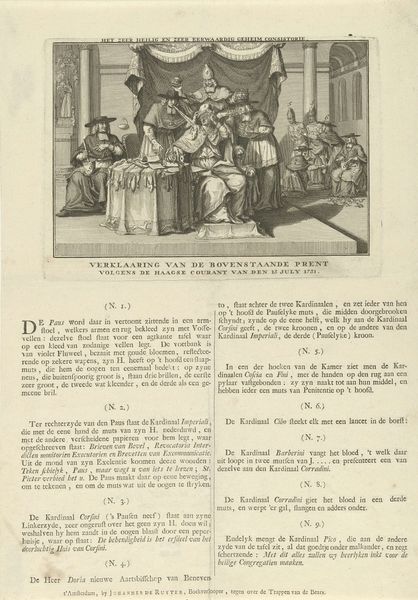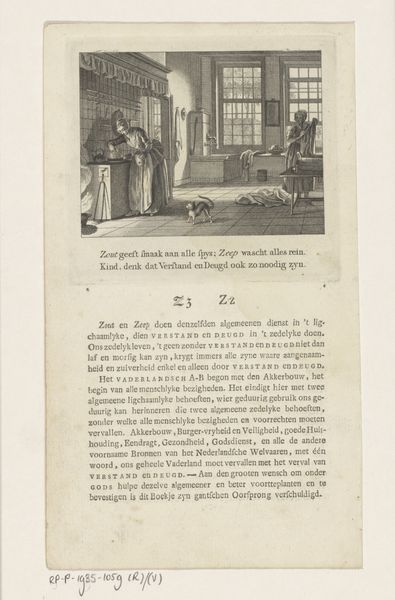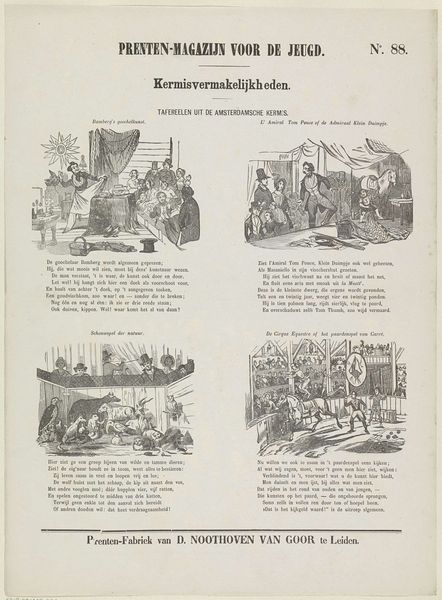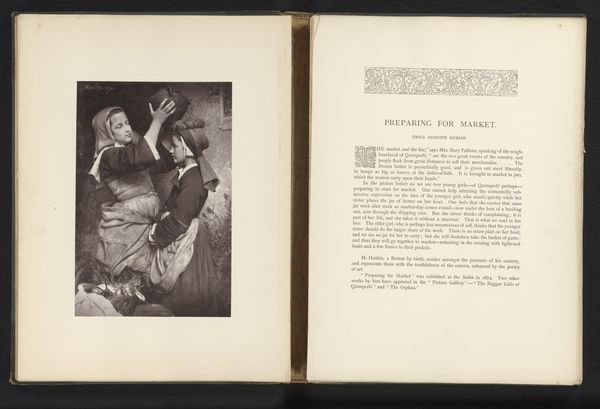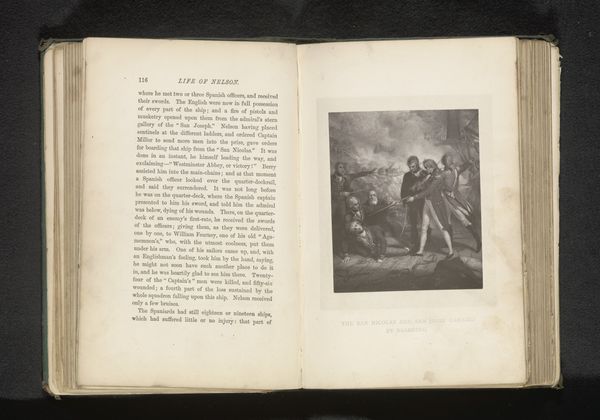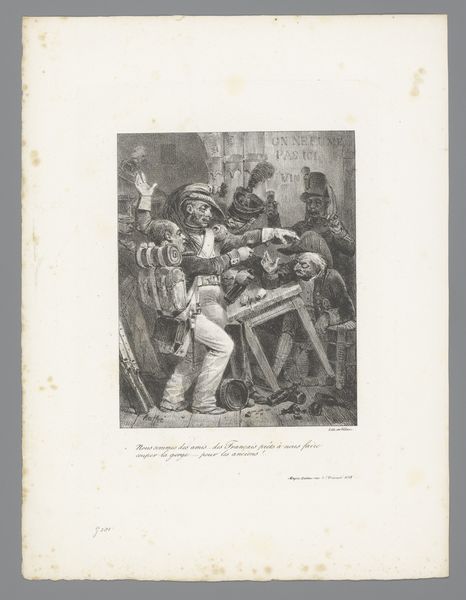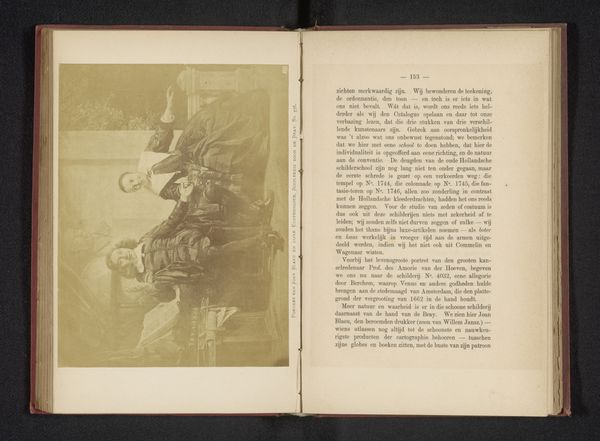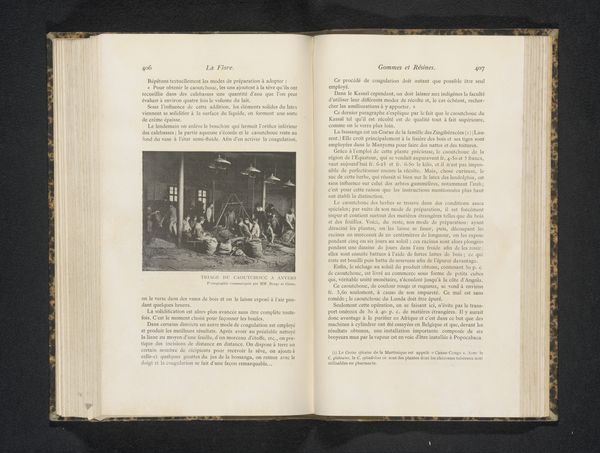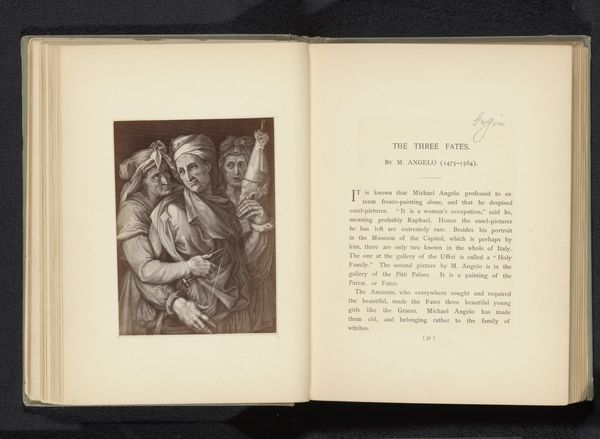
Året 1157. Illustration til "Folkekalender for Danmark 1857" 1857
0:00
0:00
print, woodcut, engraving
#
medieval
#
narrative-art
# print
#
woodcut
#
engraving
Dimensions: 66 mm (height) x 87 mm (width) (billedmaal), 180 mm (height) x 135 mm (width) (bladmaal)
Curator: Here we have “Året 1157. Illustration til "Folkekalender for Danmark 1857,” or “The Year 1157. Illustration for the People's Calendar of Denmark 1857,” created in 1857. It’s currently held at the Statens Museum for Kunst, or the National Gallery of Denmark. The piece is an engraving and woodcut print, which depicts a dramatic scene. Editor: My initial impression is of something raw and visceral. The sharp lines of the woodcut really heighten the drama. It feels immediate, like witnessing a pivotal moment in a story. It’s definitely not something lighthearted, more like a slice of dark history captured. Curator: You've hit on something there. The woodcut medium gives it a powerful and immediate quality, reminiscent of medieval manuscripts or early printed books, but executed much later in the 19th century. Editor: Right, because woodcuts served a specific function, right? Mass reproduction. Here it is re-enacting a key Danish historic tale that’s supposed to go on the “People’s Calendar”, so regular Danes see it in their homes every day. It’s not some precious painting, it's reproducible and affordable. Curator: Exactly. It allowed for wide distribution of historical and cultural narratives. It speaks volumes about the materials at hand, which facilitated this broader reach into society at large. Editor: And think of the labor! The repetitive motions involved in the engraving of each image to make each cut. To be replicated potentially thousands of times for these calendars. Curator: Certainly the time and the production tell a unique story beyond the subject of the work itself. The artist is completely unknown. Editor: The labor is effectively hidden by “anonymous,” then. What remains is the impact of its material form—something that aimed to reach as many people as possible to inform and instruct the culture in ways a precious oil painting just couldn’t do. Curator: Agreed. It highlights that constant negotiation between what art historians once separated, the so-called 'high art' and 'low art' forms and asks us to appreciate all production that speaks to humanity. What began with craft culminated with what some of the most famous names in the art world sought to explore – reaching as wide an audience as possible with messages that truly matter. Editor: It all boils down to process, materials, accessibility. Thinking about art this way shifts how we view its function, and value—it forces us to engage critically. Curator: Precisely. And perhaps with renewed appreciation for how art weaves its way into the fabric of daily life, and the lives it can touch.
Comments
No comments
Be the first to comment and join the conversation on the ultimate creative platform.
